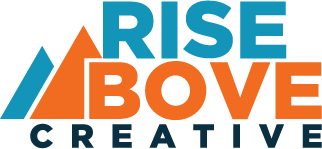Strapi and Sanity: Transforming Content Management with Headless CMS, Alongside WordPress
Introduction: The development of headless CMS solutions in the dynamic environment of content management systems (CMS) has altered how we produce, manage, and deliver digital content. Strapi and Sanity are two important participants in this field, each with their own set of advantages in the realm of headless content management. In this post, we’ll look at Strapi and Sanity’s functions in the context of headless CMS, as well as their compatibility with the commonly used WordPress platform.
Understanding Headless Content Management:
Traditional CMS platforms often combine the content creation and presentation layers into a monolithic structure, limiting flexibility and adaptability. Headless CMS, on the other hand, decouples the content creation and storage from its presentation, enabling content to be delivered seamlessly across various channels and devices.
Strapi: Empowering Content Creators
Strapi, an open-source headless CMS, has gained popularity for its user-friendly interface and robust features. Offering a flexible content architecture, Strapi allows content creators to define their own data structures and APIs, tailoring the CMS to specific project requirements. Its RESTful API and GraphQL support make it versatile, accommodating a range of applications.
The ease of use of Strapi is evident in its intuitive content editor, making it accessible for non-technical users while still providing developers with the tools they need for customization. Strapi’s extensibility and scalability make it suitable for projects of varying complexity, from small websites to large enterprise applications.
Sanity: Structured Content for Dynamic Experiences
Sanity takes a different approach to headless CMS by focusing on structured content and real-time collaboration. Its content modeling allows for the creation of highly structured datasets, enabling dynamic and interactive content experiences. Sanity Studio, the platform’s collaborative environment, facilitates teamwork and streamlines the editorial workflow.
The real-time features of Sanity, coupled with its version control system, make it a compelling choice for projects where collaboration and content versioning are crucial. Developers appreciate the flexibility provided by Sanity’s customizable APIs, enabling the integration of content into any digital platform seamlessly.
Strapi and Sanity with WordPress:
While Strapi and Sanity excel as standalone headless CMS solutions, they can also complement existing CMS platforms like WordPress. WordPress, known for its user-friendly interface and extensive plugin ecosystem, remains a popular choice for content creators.
By integrating Strapi or Sanity with WordPress, users can harness the benefits of headless CMS while still enjoying the familiar WordPress environment. Strapi’s RESTful API or Sanity’s structured content can serve as a backend, delivering content to the WordPress frontend. This hybrid approach combines the strengths of both worlds, allowing for a flexible and powerful content management solution.
Conclusion:
As the demand for dynamic and personalized digital experiences continues to grow, the role of headless CMS becomes increasingly pivotal. Strapi and Sanity stand out as robust choices, each offering unique features that cater to different project needs. Whether used independently or in conjunction with WordPress, these headless CMS platforms empower content creators and developers to build scalable, flexible, and future-ready digital experiences. As the landscape of digital content evolves, the integration of Strapi, Sanity, and WordPress showcases a harmonious blend of user-friendliness and technical prowess in the realm of content management.
What is the role of a headless content management system (CMS), and how does it differ from traditional CMS platforms like WordPress?
A headless CMS separates content creation and storage from presentation, allowing for more flexibility in delivering content across different platforms and devices. Unlike traditional CMS, headless CMS does not dictate how content is displayed, providing developers and content creators with greater freedom.
How does Strapi differ from Sanity in the context of headless content management?
Strapi and Sanity are both headless CMS solutions, but they have distinct features. Strapi is known for its user-friendly interface and flexible content architecture, enabling users to define their own data structures. Sanity, on the other hand, focuses on structured content and real-time collaboration. Understanding these differences helps in choosing the most suitable platform for specific project requirements.
Can Strapi and Sanity be used in conjunction with WordPress, and what are the advantages of such integration?
Yes, Strapi and Sanity can be integrated with WordPress to leverage the strengths of both headless CMS and the familiar WordPress environment. The integration allows for a flexible and powerful content management solution, with Strapi or Sanity serving as the backend, delivering content to the WordPress frontend. This hybrid approach combines the ease of use of WordPress with the scalability of headless CMS.
What are the key advantages of using Strapi in a content management project?
Strapi offers several advantages, including a user-friendly content editor, the ability to define custom data structures, and support for both RESTful API and GraphQL. Its extensibility and scalability make it suitable for a wide range of projects, from small websites to large enterprise applications. The platform is appreciated for its balance between accessibility for non-technical users and customization options for developers.
How does Sanity facilitate collaboration and streamline the editorial workflow in content management projects?
Sanity’s collaborative environment, Sanity Studio, plays a key role in fostering teamwork and streamlining the editorial workflow. The platform allows for real-time collaboration, enabling multiple users to work on content simultaneously. Additionally, Sanity’s version control system ensures that changes are tracked and can be rolled back if needed. These features make Sanity particularly suitable for projects where collaboration and content versioning are critical aspects of the development process.


